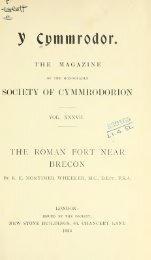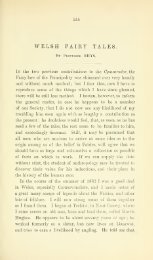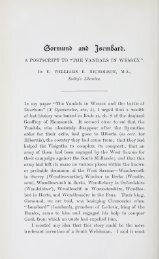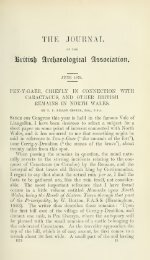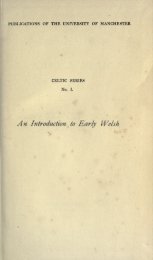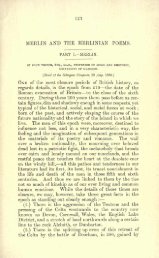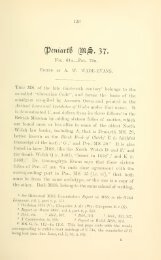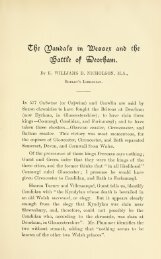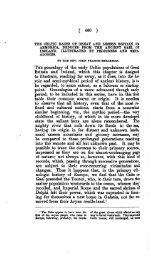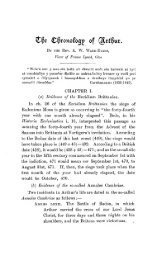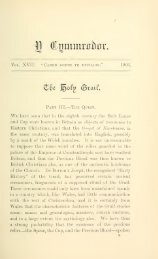Clynnog, Llanrhychwyn, Langienwen - Arthur Pendragon of Wales
Clynnog, Llanrhychwyn, Langienwen - Arthur Pendragon of Wales
Clynnog, Llanrhychwyn, Langienwen - Arthur Pendragon of Wales
You also want an ePaper? Increase the reach of your titles
YUMPU automatically turns print PDFs into web optimized ePapers that Google loves.
8o Three Old Foundations.<br />
A little wyde<br />
There was a holy chapell edified<br />
Wherein the hermit dewly wont to say<br />
His holy things each morn aud even tyde.'<br />
In accordance witb the practice <strong>of</strong> the British Church his<br />
final settlement was not lightiy undertaken. The site<br />
having been selected, with due regard more especially to<br />
a good water-supply, tben w'ould follow a period <strong>of</strong> forty<br />
days for fasting and prayer before the saint considered<br />
that the place was suffìciently hallowed for his purposes.<br />
hlan Ceinwen.<br />
Witb Ceinwen we observe another characteristic <strong>of</strong> the<br />
early days <strong>of</strong> Christianizing tbe country. Here is neither<br />
a community nor an isolated cell, but assistance vouch-<br />
safed by a member <strong>of</strong> a family to propagate the ideals<br />
in whicb she had been nurtured, so it was a natural ex-<br />
pression to realize in practice what she had always been<br />
taught, and with whicb she was thoroughly familiar. Her<br />
parisb <strong>of</strong> Llan Ceinwen is conterminous with that <strong>of</strong> her<br />
sister, Dwynwen. In both cases tbe termination " wen "<br />
is generally accepted as equivalent to " blessed "." In<br />
Cein (possibly Cain) and Dwyn we have tbe Mary and<br />
Martha <strong>of</strong> Anglesey. Cain had chosen the good part, and<br />
her foundation to-day is intact, whereas that <strong>of</strong> Dwyn,<br />
in the waters <strong>of</strong> Caernarvon<br />
alas ! has all but disappeared<br />
Bay. The sea bas made such inroads that, though in 1500<br />
Llan Dwyn was a rich prebend whicb afforded a substantial<br />
income to the then Dean <strong>of</strong> Bangor,^ to-day tbere is<br />
neither churcb nor parsonage, but a few scattered stones<br />
which mark the spots where they formerly stood, and for<br />
1 Fairie Queene (Spenser), Book I, Cant. i. St. 34.<br />
* The Lives <strong>of</strong> the British Saints, ii, p. 52.<br />
3 Valor Eoclesiasticus, vol. vi (printed 1834), p. xxxiv. Also A<br />
History <strong>of</strong> Anylesey (Anon., 1775), p. 44 ; and A Book <strong>of</strong> North <strong>Wales</strong>,<br />
p. 81.




